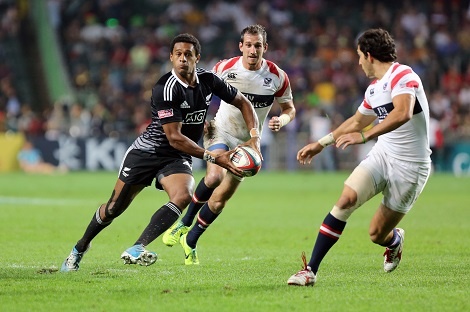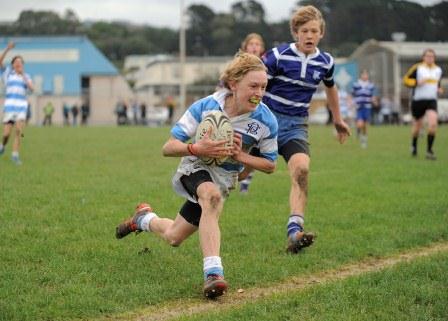- Rugby Toolbox
- Resources & Education
- Learn more
- Articles
- Snook on Coaching
- Attacking Back Play
- Ruck & Run Drill
- Playing Philosophy – Ruck & Run Coaching Components
- Playing Philosophy – Spread the Forwards
- Playing Philosophy – A forward behind the ruck
- Playing Philosophy – Ruck & Run
- Playing Philosophy – An idea!
- The Breakdown
- Building Positivity [3]
- Building Positivity [2]
- Building Positivity
- Fitness and Game Related Activities
- Getting the Head Working
- Missiles are Dangerous
- Use of Video
- Winger Attacking Outside First-Five
- Player Profiling
- Selection
- Fitness Away from the Team Session
- Playing Philosophy (Pre season Prep)
- Coaching the Coaches
- The Rugby Coordinator and Pre-Season Preparation
- Why Not Use Tap Penalties More Often?
- Why Kick the Ball Down the Middle of the Field?
- Defending the 5 Metre Lineout Drive
- Scoring from the 5 Metre Lineout
- What are the Kicking Team Aiming to Achieve from Halfway Restart
- Should We Practice Scoring Tries?
- Team Culture
- Looking After Your Players
- Coach Survival Tips
- Under 11/13 – Backline Defence
- Under 11/13 – Ruck Defence
- Under 11/13 – Back Attack
- Under 13 – The Counter Attack
- Under 11/13 – The Maul
- Under 11/13 – Lineouts
- Under 11/13 – Decision Making
- Under 11/13 – Support Play
- Under 11/13 – Dive Pass and More
- Under 11/13 – Drop & Grubber Kick /Highball Catch
- Under 11/13 – Front on Tackling
- Under 11/13 – Contact – Getting Up – The Ruck
- Under 11/13 – The Coaching Session
- Under 8/10 – Using Space
- Under 8/10 – Kicking
- Under 8/10 – Contact and Picking Up the Ball
- U8/U10 Draw & Pass and Sidestep
- Under 8/10 – The Tackle
- Under 8/10 – The Coaching Session
- Under 7 – Test Your Coaching – Support Play
- Tap Pass and Swerve U7
- Ball Familiarisation; Passing & Receiving
- Activities for the Non-Contact Tackle
- Under 7 – The Coaching Session
- Coaching Teenagers – After the Ruck
- Coaching Teenagers – The Practice Session
- Coaching Teenagers – Best Practice
- Coaching Kids – Best Practice
- Plays from a Tap Penalty
- Running Plays from a 5 Man Lineout
- Driving Plays from a 5 Man Lineout
- Strike Plays at the End of the Lineout
- Back Strike Plays at the Lineout
- Wide Strike at the Scrum (2)
- Wide Strike at the Scrum
- Midfield Attack at the Scrum
- No 8 Plays at the Scrum (2)
- No 8 Plays at the Scrum
- The Cut Out Pass
- Skills to Penetrate (2)
- Skills to Penetrate
- Movements to Penetrate
- Patterns to Penetrate
- Contact and Continuity
- Keeping the Ball Alive Out Wide
- Pre Season Support Activities
- Checklist
- Understanding the game
- The Playing Philosophy
- The Lineout
- Overview
- Team Profile
- Start Now!
- Backrow
- Nine and Ten
- Rugby-related Fitness Activities
- The Psychological Edge
- Open Field Play
- Key Performance Indicators
- Improving Team Performance
- Backline Attack Concepts
- Tactics at Phase Play
- Playing Philosophy
- The ‘Stop Focus’
- Kick Attack
- Clearing the 22
- Wide Attack at Phase
- Player Focus
- Scrum Preparation
- Lineout Preparation
- Back Attack Preparation
- Sevens Preparation
- Sevens Kick Offs
- Sevens Scrum and Lineout
- Sevens Attack Patterns
- Sevens Defence
- 7's Selection and Game Planning
- Coaching and Leadership
- How the Game Evolves
- Changing Within the Game
- Learning from the Television.
- Using Tap Penalties Wisely
- Defence Drills
- Defence Drills for Tight Five
- Team Defence and TUB’ing
- Establishing Patterns from the Ruck
- Structured Phase Play
- Structuring Phase Play on the Run
- Coaching Roles
- Structuring a Close in Tackling/Defensive Session
- Coaching in Threes
- Attacking Back Play
- Kick Off Chase
- Wrap Around Back Plays
- Lineout Plans
- Looking and Learning
- Motivating Your Players
- Scrum Attack
- Refocusing the Team
- Monitoring the Progress
- Learning the Game
- Playing to the Laws
- Small is OK
- Decisions After the Tackle
- Improving Your Coaching
- Food for Thought
- More Food for Thought
- Passing & Catching
- How Ireland Nearly Beat the All Blacks
- The Progressive Coach
- Try Something New
- Encouraging Excitement
- The Mental Approach
- Where to Start
- Being the Best You Can Be
- Off the Ball Decisions
- Lineouts Difficult to Master
- Decisions on the Run
- Rucking and Rolling
- A Successful Approach
- Gaining Clarity
- Manipulation vs Physicality
- Beating the Drift
- To Ruck or Not to Ruck
- Stopping the Lineout Drive
- Fine Tuning the Planning
- It's a Running Game
- RugbySmart 2015
- Using the Shoulders
- Loosehead Prop / Tighthead Prop
- Position Specific – Hooker
- Position Specific – Lock
- Position Specific – Blindside Flanker
- Position Specific – Openside Flanker
- Position Specific – No 8
- Position Specific – Halfback
- Position Specific – First Five Eighth
- Position Specific – Second Five Eighth
- Position Specific – Centre Three-quarter
- Position Specific – Wing
- Position Specific – Fullback
Attacking Back Play

Attacking back play utilising individual strengths
When putting your backline together there are two criteria which you could consider.
1- Every player must be an attacking threat in some way.
2- Every player must understand how his play both with and without the ball can help make the unit an effective strike force.
Being an Attacking Threat
1- Carrying the ball.
Based on size, speed, agility and power each player will have a particular strength or two. These need to be practiced and a plan devised as to how they fit in to the back attack patterns.
Depending on each player’s particular strengths and skills could well determine where a player then fits in to the plan.
The question that needs to be answered is what can this player do to be a threat when he is carrying the ball?
If he is big, strong but not overly quick off the mark he will demonstrate a different method of attacking than a player who may also be big and strong but with quicker acceleration and more power.
Where and when they receive the ball will differ if they are to be effective. How they physically force the penetration line will differ.
The slower of the two may need to receive the ball a trifle earlier to gain some momentum and allow him to step in to the contact in an aggressive manner whilst using a fend, whereas the more powerful player will hit top pace much sooner and threaten with a quick change of direction and pace when forcing the penetration line.
When you consider that your backline will have seven different individuals with differing combinations of attacking strengths each player must know what his plan of attack is going to be based on what he is good at. From there he will be able to work out where and when is the best situation for him to receive the ball.
As an example a small but quick winger who has an electric acceleration may find that his best attack comes from tracking behind the line in back attack and phase play and accelerating on to an inside ball that he calls for when he recognizes that the inside defence is not moving up.
By providing guidelines in a series of questions to be answered your backs will be able to develop their own strengths and devise ways in which they are most effective for the team. To make life easier you could then devise an attack pattern based around an individual’s skills. At the moment most plays are manufactured around an idea that the players then have to fit in to.
2-Passing the Ball
Passing the ball is more often than not designed to create situations that provide the attackers with more space in which to run and attack and to help with the continuity and flow of the game. The confidence to pass the ball is paramount in creating attacking opportunities. If there is one skill in the game that needs to be constantly rehearsed and improved then concentrate on this.
Passing should be so much more than a basic lateral pass. A short reverse pass executed at the correct time can completely change the direction of your attack. A pop pass in a tackle will ensure continuity and flow in your game. A really long pass can establish a front running player a long way from where most defenders are situated.
Some players will be able to pass better than others. Some players will have the ability to do a reverse pass. Find out who these players are. How can their particular passing skill be utilized in your attack? What and where is the best situation to set up an attack based on a pass that carries something different about it? Set the question to your players.
In the meantime practice passing and running under pressure within your patterns. The better your team becomes at this the more able they will be in operating under pressure during a game. Devise one play based on a ‘different type of pass’.
Threatening without the Ball.
As each of your attackers practices his special attack skills he should outline what he needs to happen inside and outside him to provide the best opportunity for success. Obviously the best chance of success occurs the fewer the number of defenders in his channel if he is the potential penetrator.
Does he want the inside passer/s to be flat and pass it back to him? Does he require a tracking runner who can pop up inside or outside? How will this player know what to do? Does he want the ball early or as he accelerates and changes direction? Based on this where and who does he want the pass to come from? What are required from the players outside / closest to him as he receives the ball?
There should be a conglomeration of enthusiasm, excitement and activity every time there is an attack opportunity. In due time each player will be able to ‘read’ what is likely to happen and will act accordingly.
The big question for the coach to pose as they practice together is, ‘who is holding this defender in the line so that he is not able to change his focus on to the penetrator?’ This will ensure that everyone keeps working even after they have passed the ball or before they receive it.
Back play needs to change its shape from solely a lateral passing and running game to a combination of differing depths and widths and changes of pace, angle and passing, based around an individuals’ particular talents and all players continually carrying out roles that threaten with and without the ball.
Once all this occurs the team needs to decide on the best action of attack as far as continuity skills are concerned. The plan is to score so how are you going to go about it!